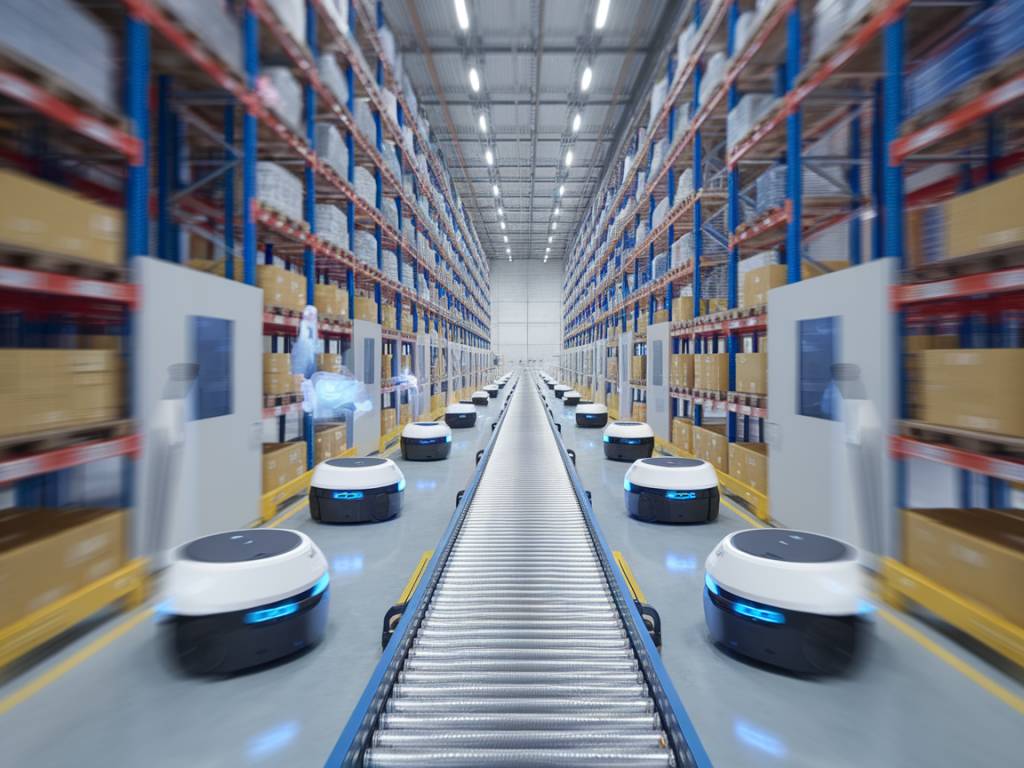In the rapidly evolving world of logistics, the concept of smart warehouses has gained significant traction. Leveraging the power of the Internet of Things (IoT) and automation, these advanced facilities are revolutionizing the supply chain industry. This article aims to delve into how IoT and automation are transforming warehouses, enhancing efficiency, accuracy, and overall operational output.
The Emergence of the Smart Warehouse
Smart warehouses represent the future of logistics, characterized by the integration of various technologies that streamline and optimize operations. Traditional warehouses relied heavily on manual processes, which were time-consuming and prone to errors. The advent of IoT and automation has introduced an era of intelligent operations, allowing for dynamic and responsive logistical systems.
Understanding IoT in Warehousing
The Internet of Things (IoT) refers to a network of interconnected devices that communicate and exchange data in real time. In the context of warehousing, IoT enables the seamless integration of various components, such as sensors, RFID tags, and GPS trackers, leading to improved visibility and management of assets.
Key IoT applications in warehousing include:
- Asset Tracking: IoT devices can monitor the location and condition of assets in real time, reducing the likelihood of loss or damage and ensuring optimal utilization of resources.
- Inventory Management: Smart shelves equipped with sensors can automatically update inventory levels, facilitating accurate stock management and reducing the risk of overstocking or stockouts.
- Environmental Monitoring: IoT sensors can track environmental conditions such as temperature and humidity, crucial for preserving the quality of sensitive goods.
- Predictive Maintenance: IoT-powered predictive maintenance can forecast equipment failures and schedule timely maintenance, thus minimizing downtime and enhancing efficiency.
The Role of Automation
Automation complements IoT by performing repetitive and labor-intensive tasks without human intervention. Automated systems in warehouses can include robotics, conveyor belts, automated storage and retrieval systems (AS/RS), and automated guided vehicles (AGVs).
Key benefits of warehouse automation are:
- Increased Efficiency: Automation reduces the time required for tasks such as picking, packing, and sorting, significantly speeding up operations.
- Enhanced Accuracy: Automated systems reduce the risk of human error, ensuring more accurate order fulfillment and inventory management.
- Cost Savings: By reducing reliance on manual labor, automation can lower operational costs and increase profitability.
- Scalability: Automated systems can easily scale up or down based on demand, providing flexibility in managing varying workloads.
Integration of IoT and Automation
When IoT and automation are combined, the symbiosis of these technologies delivers unparalleled benefits to warehouse operations. IoT-powered data analytics provide insights that enhance the decision-making process, while automation executes those decisions with precision and speed.
Examples of this synergy include:
- Automated Inventory Replenishment: IoT sensors detect low inventory levels and automatically trigger replenishment orders, ensuring that stock is always available without human intervention.
- Real-Time Performance Monitoring: IoT devices track the performance of automated systems, providing data analytics that can be used to optimize workflows and identify areas for improvement.
- Smart Routing: IoT data can be used to optimize the routes of AGVs within the warehouse, reducing travel time and improving overall efficiency.
Challenges and Considerations
While the advantages of smart warehouses are compelling, implementing IoT and automation technologies comes with its own set of challenges:
- High Initial Investment: The cost of deploying IoT devices and automated systems can be substantial. However, the long-term benefits often outweigh the initial expenses.
- Data Security: The connectivity of IoT devices introduces potential vulnerabilities, making data security a critical consideration.
- Integration with Existing Systems: Transitioning from traditional to smart warehouses requires the seamless integration of new technologies with legacy systems, which can be complex and time-consuming.
- Workforce Training: Employees need to be trained to work alongside automated systems and understand the data generated by IoT devices, necessitating ongoing education and upskilling.
Future Trends in Smart Warehousing
The landscape of smart warehousing continues to evolve, with new advancements on the horizon:
- AI and Machine Learning: Artificial intelligence and machine learning algorithms will further enhance the capabilities of IoT and automation, providing deeper insights and predictive analytics.
- 5G Connectivity: The rollout of 5G technology will significantly improve the speed and reliability of IoT communications, leading to more efficient and responsive warehouse operations.
- Blockchain Integration: Blockchain technology has the potential to enhance transparency and traceability in the supply chain, providing a secure and decentralized method for tracking goods.
- Collaborative Robots: Also known as cobots, these robots are designed to work alongside human workers, combining the strengths of both to improve productivity and safety.
The power of IoT and automation in logistics cannot be overstated. Smart warehouses are transforming the industry by optimizing operations, enhancing efficiency, and providing comprehensive real-time data visibility. While the implementation of these technologies presents certain challenges, the long-term benefits are substantial. As the technology continues to advance, the future of smart warehousing promises even greater innovation and efficiency.
50-Word Summary: The integration of IoT and automation in smart warehouses is revolutionizing logistics by enhancing operational efficiency, accuracy, and scalability. While challenges exist, the long-term benefits and future advancements in AI, 5G, blockchain, and collaborative robots promise a transformative impact on the industry.
